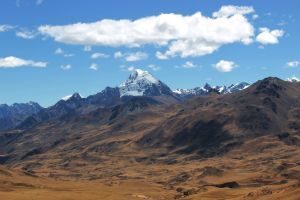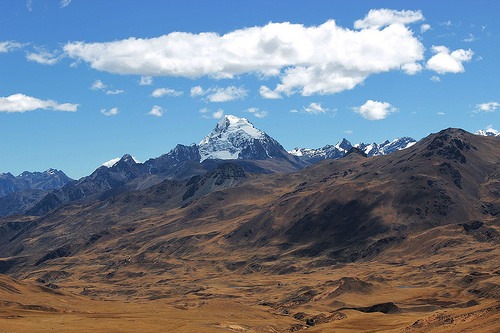
Researchers provide evidence for the early cultivation and use of potato (Solanum tuberosum) at an archaeological site in the Andes Mountains of south-central Peru. Studying the domestication of the potato, an important crop in the high Andes, could help illuminate the development of highland Andean culture, but limited direct botanical evidence of potato domestication in the region has hindered research efforts. Claudia Rumold and Mark Aldenderfer* collected microbotanical samples from groundstone tools from Jisakairumoko, a site situated in the western Titicaca Basin of Peru that reflects a transition from sedentism to food production. On 14 groundstone tools, the authors found 141 starch microremains, and microscope photographs and subsequent taxonomic identification revealed that 50 of the starch granules were of Solanum origin. The potato starches were similar in size to modern potato starches, and anthropogenic wear on the starches was consistent with culinary processing methods. The findings might help us understand the development of food production in Jisakaurumoko, and more broadly, illuminate plant domestication and cultivation in the Andes Mountains.
_______________________________________
Findings may help illuminate understanding of plant domestication and cultivation in the Andes Mountains. Josue Hermoza, Wikimedia Commons
___________________________________________________
Source: Proceedings of the National Academy of Sciences press release.
____________________________________________________
*“Late Archaic–Early Formative period microbotanical evidence for potato at Jiskairumoko in the Titicaca Basin of southern Peru,” by Claudia Rumold and Mark Aldenderfer.
____________________________________________________

______________________________________________
Travel and learn with Far Horizons.
____________________________________________
This richly illustrated issue includes the following stories: Recent findings shedding new light on the whereabouts of the remains of Philip of Macedon, father of Alexander the Great; how an archaeologist-sculptor is bringing bones of the dead back to life; archaeologists uncovering town life at the dawn of civilization; an exclusive interview with internationally acclaimed archaeologist James M. Adovasio about what makes the Meadowcroft Rockshelter prominent in the ongoing search for the first Americans; what archaeologists are finding at the site of the ancient city of Gath, the home town of the biblical Philistine giant, Goliath; and how scientists are redrawing the picture of human evolution in Europe. Find it on Amazon.com.







